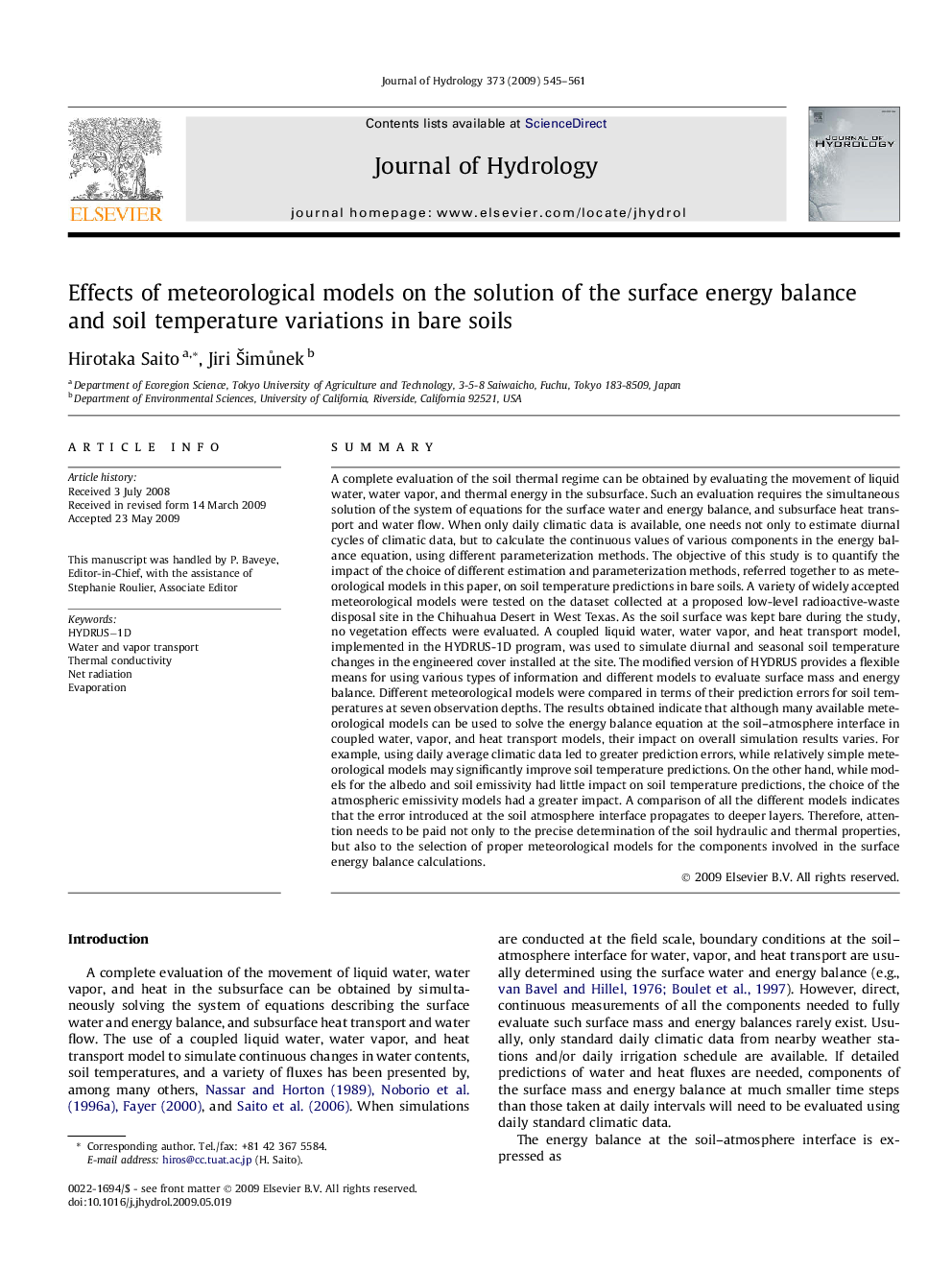| کد مقاله | کد نشریه | سال انتشار | مقاله انگلیسی | نسخه تمام متن |
|---|---|---|---|---|
| 4578729 | 1630078 | 2009 | 17 صفحه PDF | دانلود رایگان |

SummaryA complete evaluation of the soil thermal regime can be obtained by evaluating the movement of liquid water, water vapor, and thermal energy in the subsurface. Such an evaluation requires the simultaneous solution of the system of equations for the surface water and energy balance, and subsurface heat transport and water flow. When only daily climatic data is available, one needs not only to estimate diurnal cycles of climatic data, but to calculate the continuous values of various components in the energy balance equation, using different parameterization methods. The objective of this study is to quantify the impact of the choice of different estimation and parameterization methods, referred together to as meteorological models in this paper, on soil temperature predictions in bare soils. A variety of widely accepted meteorological models were tested on the dataset collected at a proposed low-level radioactive-waste disposal site in the Chihuahua Desert in West Texas. As the soil surface was kept bare during the study, no vegetation effects were evaluated. A coupled liquid water, water vapor, and heat transport model, implemented in the HYDRUS-1D program, was used to simulate diurnal and seasonal soil temperature changes in the engineered cover installed at the site. The modified version of HYDRUS provides a flexible means for using various types of information and different models to evaluate surface mass and energy balance. Different meteorological models were compared in terms of their prediction errors for soil temperatures at seven observation depths. The results obtained indicate that although many available meteorological models can be used to solve the energy balance equation at the soil–atmosphere interface in coupled water, vapor, and heat transport models, their impact on overall simulation results varies. For example, using daily average climatic data led to greater prediction errors, while relatively simple meteorological models may significantly improve soil temperature predictions. On the other hand, while models for the albedo and soil emissivity had little impact on soil temperature predictions, the choice of the atmospheric emissivity models had a greater impact. A comparison of all the different models indicates that the error introduced at the soil atmosphere interface propagates to deeper layers. Therefore, attention needs to be paid not only to the precise determination of the soil hydraulic and thermal properties, but also to the selection of proper meteorological models for the components involved in the surface energy balance calculations.
Journal: Journal of Hydrology - Volume 373, Issues 3–4, 15 July 2009, Pages 545–561